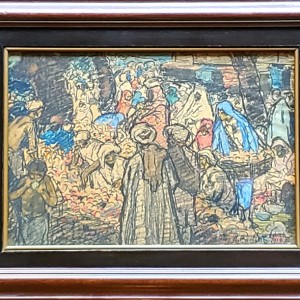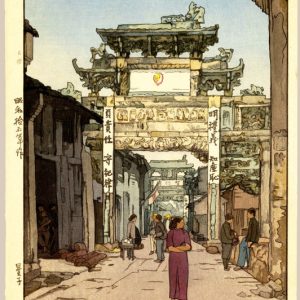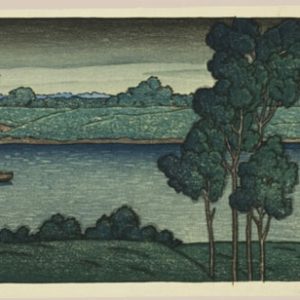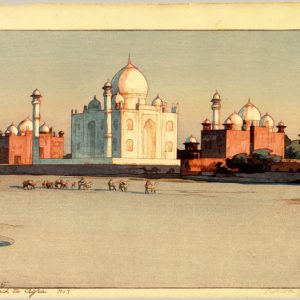Ito Shinsui, A Theatrical Japanese Dance – Dōjōji (Naga-ban Format)
Category:
Price:
$6,500.00
Status:
Catalog ID
A2934
Artist
Ito Shinsui
Title
A Theatrical Japanese Dance - Dōjōji (Naga-ban Format)
Medium
Original Japanese Woodblock Print on Lithographic Poster
Series Title
Beauties
Edition
First and only.
Date
1932
Publisher
S. Watanabe Color Print Co.
Reference No
Size
23 -3/4 x 10 " (Naga-ban Format); 30 x 20 -3/4 (Lithographic Poster)
Condition
Fine, with superb colors. Due to the size, handling creases throughout.
Price
$6,500.00
Shipping (US)
45.00
Shipping (Non-US)
95.00
NOTES:
Notes: The naga-ban format design was only produced for The Japanese Government Railways (500 approximate impressions). Still attached to original lithograph; complete as issued. Dated and signed at upper left corner, with artist's red seal. Title printed on the bottom margin, Theatrical Dance entitled "Dojoji" Artist Ito Shinsui, Wood-cut Printing by S. Watanabe, Tokyo 1932. The lithographed Japanese Government Railways poster displays a decorative background with the famous bronze temple bell that is so prominently used in the theatre play. See image #2 for entire lithographed poster, with print attached.
Dōjōji is a famous Noh play. Traditionally it is said to be written by Kan'ami and revised by Zeami. It originated from a longer 15th century play called Kanemaki ("Wrapped in a Bell"). It is set in the Buddhist temple Dōjō-ji in Kii Province, telling the story of a vengeful serpent-spirit and a temple bell. It is practically the only Noh play to use a substantial prop — a huge bell. Due to the bell in this play, dedicated Noh stages have a hook used for holding this bell in the center of the roof, and a metal loop at upstage left to hold the rope when lowering it; these are used only for this play. The part calls for a change of Noh costumes inside the bell, which is very challenging, due to being done alone, in the dark, in cramped quarters – normally a Noh costume is put on by several attendants. Accordingly, this role is reserved for the very best senior actors.
Guaranteed safe checkout










